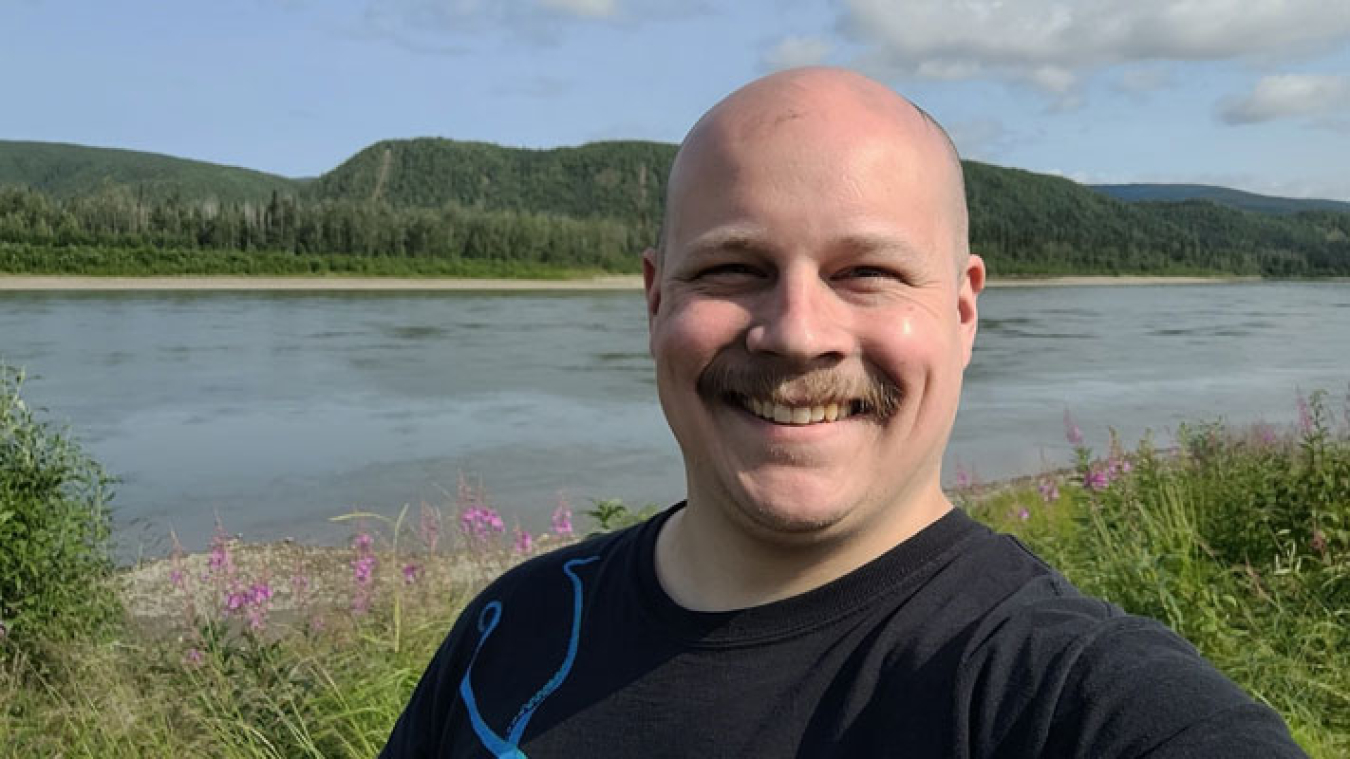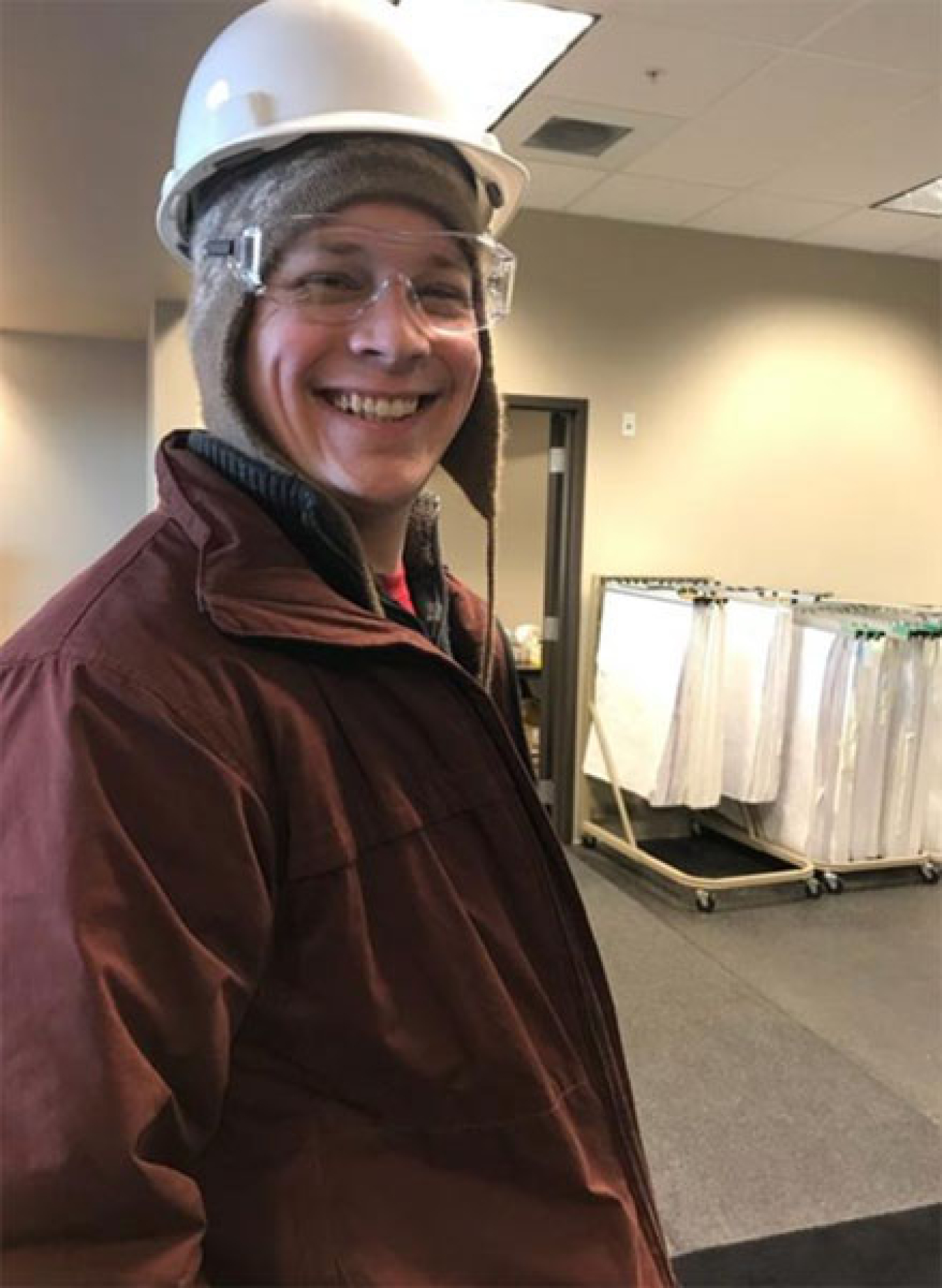Dan Smith is a general engineer who joined the team in March 2021 and is duty stationed in Anchorage, Alaska.
Office of Indian Energy Policy and Programs
August 9, 2021Smith Serves to "Build Infrastructure for People's Needs" in Alaska
The team of federal employees supporting the U.S. Department of Energy (DOE) Office of Indian Energy Policy and Programs is small but mighty. In this "Meet Our Team" blog post series, we introduce key staff dedicated to the Office and its mission to support tribes in pursuing their energy visions.

Photo courtesy of Dan Smith.
Dan Smith is a general engineer for the Office of Indian Energy who joined the team in March 2021 and is duty stationed in Anchorage, Alaska. Read on to learn more about him and what motivates his impactful work in the Office of Indian Energy.
What do you do in your role for the Office of Indian Energy?
I serve as an expert on rural Alaska energy systems supporting technical assistance and administering financial assistance awards to Alaska Native villages, Alaska Native regional and village corporations, and tribal and intertribal organizations. Ultimately, I do whatever I can to help the tribes reach their energy goals, as those goals to the Office's statute.
What do you find most inspiring about your work for the Office of Indian Energy?
With my background working in rural Alaska, I have plenty of inspiration to draw from. I have worked with folks trying to fix power failures in the dark Alaskan winters, where a power outage can be a life-or-death situation for some. It takes a lot of energy to keep the lights on, homes warm, and water liquid when the winters get to -40 degrees Fahrenheit. Prior to coming to DOE, I worked with several Alaskan villages that had suffered from drinking water freeze-ups, which resulted in their drinking water system being disabled for the rest of the winter; in some of those cases, the community would have to rely on hauling water from a central watering point. Increasing energy resilience goes a long way to recovering from such catastrophes—and even preventing them from occurring in the first place.
The needs in Alaska are great, and I am honored to help tribes find the resources they need to address these challenges. Ultimately, my work for the Office of Indian Energy aligns with my personal mission to build infrastructure for people who need it. It's one thing to build infrastructure, but if no one is getting benefit out of it, it’s of no use. In this way, the mission of the Office aligns with my own personal values.
Ultimately, my work for the Office of Indian Energy aligns with my personal mission to build infrastructure for people who need it.
What do you see as the greatest challenges and opportunities in tribal energy development today, particularly in Alaska?
A common goal for many Alaska Native villages and tribes is to increase the resilience and self-sufficiency of their energy portfolio; the term "energy sovereignty" comes to mind. Local energy infrastructure can help Alaskan villages and tribes with these goals by reducing their reliance on uncertain supply chains, modernizing existing infrastructure, and developing new solutions to overcome these challenges.
There is a lot of work to do—and when it comes to rural Alaska, it's certainly a challenge. It's really hard to get things done [in Alaska] because a lot of basic infrastructure is either nonexistent or aging. There are some villages that still don't have running water. Modernizing is a way to increase quality of life, to make those systems a little more resilient so that the lights will stay on, and homes will stay warm, especially during winter.

Photo courtesy of Dan Smith.
How have you seen the technical and economic support provided by the Office of Indian Energy impacting people's lives?
I have seen the benefits that a good energy project can bring to a village and its individual residents, whether that’s in the form of more stable water or sewer rates, reduced energy costs, or more energy efficient buildings. In all of those cases and more, the projects I have worked on and been a part of—both in my previous positions prior to joining DOE and now as part of the Office of Indian Energy—have helped elevate standards of living for communities in Alaska.
Tell us about one of your favorite energy projects you've worked on throughout your career in Alaska.
One of the more interesting projects I've been a part of, was in a previous job where I also served Alaska Natives. In Perryville, Alaska, the community took the initiative and installed 10 small wind turbines to help offset diesel fuel use for electricity production. The community's diesel generator was upgraded from an old single-phase power system to a new three-phase power system. The wind turbines the community had installed were all single phase and would have thrown the electrical microgrid off balance. The solution was to split the wind turbines evenly among the three phases as best as possible and upgrade the system controls. Any surplus wind energy was shifted to an electrical boiler to provide extra heat to a heat recovery system that pulled waste heat from the diesel generator to provide space heating to the nearby school. For me, this was a great example of a community coming together to address a challenge and in modernizing its energy infrastructure.
What do you see looking ahead to the future of energy in Alaska?
In Alaska, I see trends toward improved power system controls, additional electrical interties, and energy storage through various methods, in conjunction with increased renewable energy deployments. It’s become part of the collective consciousness of many citizens to want to use local indigenous resources through renewable energy systems for electricity production, and to capitalize on that, we need to upgrade the existing power system controls so renewable [energy systems] can be integrated effectively into remote village microgrids.
I also think that some sort of biofuels would make an excellent stepping stone to help Alaska Native villages transition to clean energy while capitalizing on existing infrastructure and minimizing fossil-fuel emissions. Overall, I'm excited to see bigger renewable energy projects coming online, and I also see the future potential to use any excess renewable generation from these larger projects to manufacture hydrogen or other clean fuels for transportation or as an export commodity.
Learn more about Dan Smith and the Office of Indian Energy.

